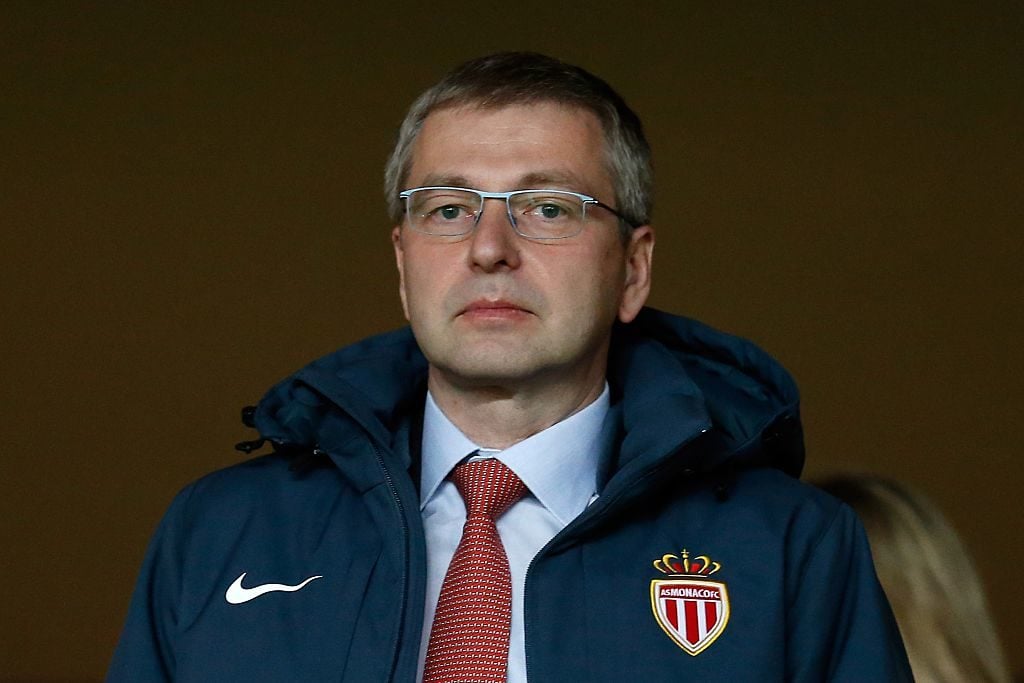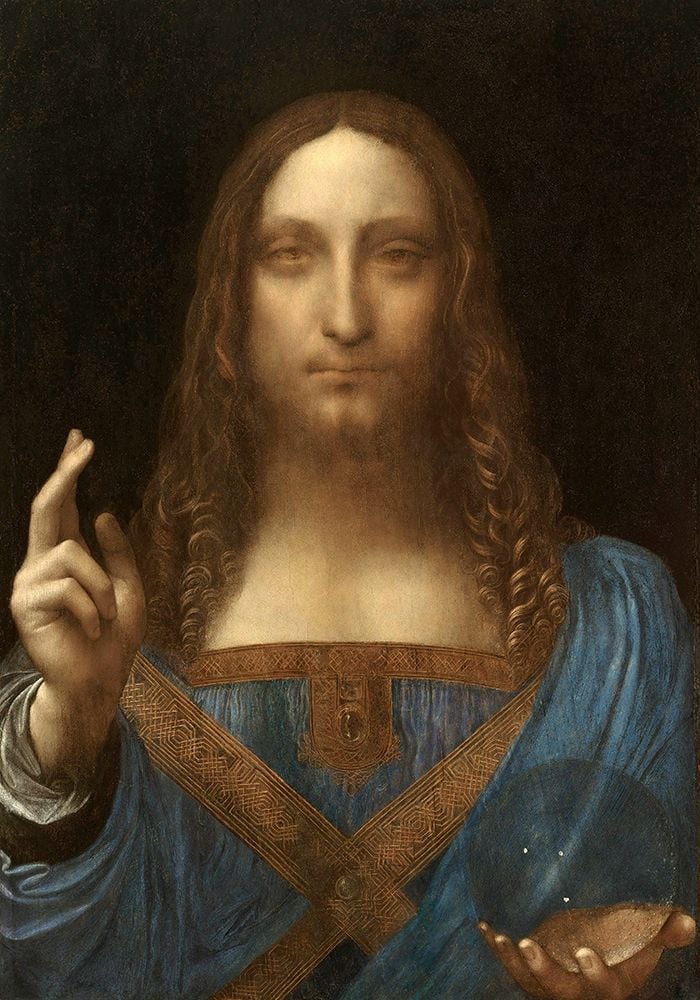Law & Politics
A Key Sotheby’s Executive Took the Witness Stand, as Epic Rybolovlev Fraud Trial Lumbers Forward
All eyes are on Sotheby's executive Sam Valette this week as he testifies about multi-million dollar private deals.

All eyes are on Sotheby's executive Sam Valette this week as he testifies about multi-million dollar private deals.

Eileen Kinsella

As the art world’s most high profile trial in years slogs towards the end of its second week, a star witness stepped on the stand for the first time, late in yesterday’s (January 16) proceedings.
Samuel Valette, Sotheby’s senior vice president, vice chairman, and head of private sales for Europe, the Middle East, and Africa, has figured prominently in Dmitry Rybolovlev’s long-running case accusing Sotheby’s of fraud. Valette played a key role as a liaison to Swiss dealer Yves Bouvier, the dealer who sold some $2 billion worth of artworks to the Russian billionaire.
In late 2014, Rybolovlev says he discovered he was defrauded to the tune of roughly $1 billion on those art purchases due to dramatic price hikes that allegedly crossed the line from mark-up into the realm of fraud. Rybolovlev alleges that Sotheby’s “aided and abetted” the fraud by weighing in on the valuations of the works at issue. Rybolovlev and Bouvier settled all of their outstanding claims across jurisdictions in December.
In the early stages of questioning from Rybolovlev’s attorneys yesterday, Valette was relaxed, forthright, and composed as he was peppered with questions about emails outlining his dealings with Bouvier, whom he called a “very good client.” The artworks under scrutiny include: Tete, a limestone sculpture by Amedeo Modigliani; Le domaine d’Arnheim (The Domain of Arnheim), a painting by Rene Magritte; Water Serpents by Gustav Klimt; and Salvator Mundi by Leonardo da Vinci.
One of Rybolovlev’s attorneys, Daniel Kornstein, pursued a line of questioning suggesting that Valette knew all along that Bouvier’s client was Rybolovlev and, further, that Valette resisted efforts by Sotheby’s colleagues to bring Rybolovlev, who was known to only buy privately and not at auction, on board as a client. For instance, Kornstein presented an email in which Valette wrote to colleagues that Bouvier’s client was “a young fast moving billionaire. A lot of money. Focused on Picasso right now. Does not speak English.”
Pressed about the language in the email, Valette asserted that he was relaying information to his colleagues, emphasizing: “I had no idea at the time who Mr. Bouvier’s client was.”
Today, Valette was back on the witness stand being cross-examined by Kornstein. The attorney produced a flood of emails between Valette and Bouvier as well as Valette and various auction house colleagues that clearly sought to lay out a trail of communications and activity that backed up the notion that Valette and Sotheby’s were in cahoots on the alleged fraud.
But the questioning yielded little; Valette gave short, forthright answers or admitted that he didn’t know about or remember certain details.
Asked whether he had ever asked Bouvier if he resold paintings to Rybolovlev or asked if Bouvier was acting as an agent, Valette responded “no.” When Kornstein repeatedly asked if Valette knew Bouvier was “flipping” paintings to Rybolovlev, Valette admitted he knew that, as a dealer, Bouvier was of course “quickly flipping” some works but he didn’t know which artworks or to whom.
At one point, Kornstein asserted that certain communications about Salvator Mundi with Bouvier were written on Sotheby’s letterhead because Valette knew they would be seen by a third party (.i.e Rybolovlev). “If [Bouvier] was the buyer why did he need it on Sotheby’s letterhead?”
It was a way of making the “communications as complete as possible,” especially since there were some caveats about the painting that were raised in accompanying notes. Valette pointed out that it was Kornstein who first asked about debates around authenticity earlier in the cross-examination. Valette said: “It’s true there was debate. There will always be debate. It’s the nature of the beast.”
Today’s proceedings ended on a potent reminder of the degree of wealth pervading the matters at hand. Kornstein asked Valette if he had ever spent time on Bouvier’s yacht. When he mistakenly called it “Mr. Valette’s yacht,” the witness said “I don’t own a yacht.”
After Valette then freely admitted that yes he had visited and stayed on Bouvier’s yacht, which he called “F-A-N-T-A-S-T-I-Q-U-E” in an email shared in court, Kornstein replayed an earlier video-taped Valette deposition in which he was questioned about Bouvier’s “boat,” whether he had been on it, and what port or country it was docked in. After some pointed questions about the type of boat and responding that there were “no sails” and how many bedrooms it has, the attorney got the answer he was fishing for. It was indeed a yacht.
“Over and over, Sotheby’s senior salesman, Sam Valette, testified that he disregarded internal rules and policies and inflated art valuations,” said Kornstein in an email after today’s proceedings. “But the art market relies on auction houses like Sotheby’s to follow their own guidelines and create reliable valuations that can be trusted.”
Yesterday, Valette was also forthright about not letting other Sotheby’s employees know about the 2013 deal that was in the works for a private sale of the Da Vinci Salvator Mundi nor moving forward with Sotheby’s colleagues’ requested meetings to cultivate a direct auction house relationship with Rybolovlev. Had he referred to a proposed meeting as “a complete waste of time”? “I certainly said it. That’s something I would say,” said Valette. More than once on the stand, Valette emphasized that what Bouvier did with paintings after Sotheby’s sold them to him privately was not something he followed, nor was he responsible for it.
Rybolovlev settled with Bouvier late last year after years of legal wrangling in jurisdictions across the globe; Bouvier is not a party to the ongoing case against Sotheby’s. Bouvier’s attorneys recently reiterated in a statement emailed to Artnet News that “the allegations being made against Mr. Bouvier in the New York proceedings have already been rejected by authorities all around the world. Since starting legal action against Mr. Bouvier in 2015, all nine of the court cases filed in Singapore, Hong Kong, New York, Monaco and Geneva have been discontinued by the authorities.”
Earlier in the day on Tuesday, London art dealer Guy Stair Sainty, who served as an expert witness for Rybolovlev’s team, testified about the massive price hikes applied to the works that Bouvier acquired and then quickly flipped to Rybolovev. For instance, the Klimt, Water Serpents, was bought for more than $120 million and then sold to the Russian collector for roughly $186 million; for Salvator Mundi, Bouvier paid roughly $83 million and then turned around and sold it to Rybolovlev for just over $127.5 million about 48 hours later. (Of course, as most art market followers know, the painting later sold for just over $450 million at a major Christie’s evening auction in 2017 but mentions of the price are limited in court due to the exclusion efforts of Rybolovlev’s attorneys).
Stair Sainty fielded questions about due diligence on the part of auction houses concerning who the ultimate beneficial owner of a work is, as well as issues of red flags surrounding clients who want “extreme confidentiality” or suddenly appear on the scene with astronomical sums of money to spend on art. He cited several recent scandals such as that involving Malaysian fraudster Jho Low, who allegedly stole hundreds of millions of dollars from the Malaysian sovereign wealth fund 1MDB, and spent some of that on art that was “revealed as problematic.”

Leonardo da Vinci, Salvator Mundi (ca. 1500). Courtesy of Christie’s Images Ltd.
Asked about emails between Valette and Bouvier where the purported valuation of a Modigliani sculpture under discussion jumped by €10 million in the course of one day, Stair Sainty said there were “no serious grounds for increasing the value by €10 million” in such a short time span.
“It is a matter of trust,” Stair Sainty said. When Sotheby’s sends you a valuation, he testified, it’s natural to accept their opinion. Stair Sainty also explained other aspects of the art market, including how someone cannot act as both an agent and a dealer in the same transaction.
Valette of Sotheby’s began his testimony by confirming he was Rybolovlev’s key client manager but testifying that he “did nothing to cultivate that relationship,” said Kornstein in an email to Artnet News.
Rybolovlev wrapped up his testimony last Friday with Sotheby’s lead attorney Marcus Asner conducting a cross examination of him and asking pointed questions about his own responsibility in overseeing the details of pricey deals conducted by his former right hand man Mikhail Sazonov. Speaking quietly, through a translator, Rybolovlev was often obstinate about even basic questions regarding his life and past business dealings or even recognizing his own emails.
Trained as a medical doctor in Russia, Rybolovlev went on to find a company that provided medical services with his father, also a doctor. Asner noted that at times in the early 1990s when clients could not pay in cash, the company often accepted goods in exchange for services and sold those goods for more money.
“Well, if it happened that way, yes,” replied Rybolovlev.
“Well it did happen that way,” emphasized Asner.
The oligarch deflected questions about whether and to what extent he had ever double-checked Sazonov’s work to the point where the judge himself interjected to reiterate that the question was whether Rybolovlev had done “any” checking at all. Presented with the Christie’s catalogue entry for the 2017 sale of Salvator Mundi, Asner asked him if it was his painting that he had sold at Christie’s. “It looks like it,” Rybolovlev said.
Sotheby’s said in a statement following the testimony: “Throughout Mr. Rybolovlev’s testimony, it was patently clear that, as a self-made billionaire with a diverse and expansive network of interests, none of the care and attention to detail he attended to his businesses were given to his art transactions. This mismanagement and lack of professional standards in dealing with Yves Bouvier are at the root of this case and have absolutely no bearing on Sotheby’s or the accepted practices of the art market.”
The courtroom went completely silent at the end of Rybolovlev’s testimony on Friday when he suddenly became emotional about the fallout with Bouvier. Asked by Kornstein why Rybolovlev’s extensive business experience had not protected him from Bouvier’s alleged fraud, he responded that Bouvier “behaves in a way that makes you trust him.”
Rybolovlev paused, raised his hand to his forehead, and then wiped his eyes, before stating that Bouvier had become like a part of his family. He added: “I am not a person who trusts easily.”